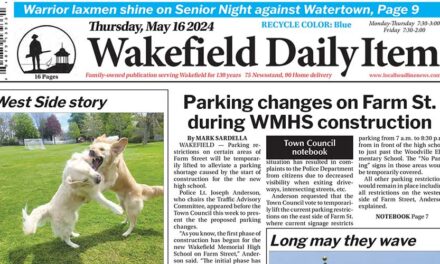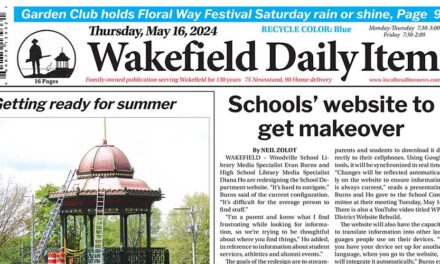Published in the February 13, 2018 edition.
By MARK SARDELLA
WAKEFIELD — Little new ground was covered at last night’s public hearing on National Grid’s proposal to run to run 3.5 miles of underground transmission line through Wakefield as part of a larger joint National Grid/Eversource Woburn to Wakefield line.
Dr. Robert Kavet, the consultant that the town hired to analyze any potential health and safety risks from electromagnetic fields coming from the transmission line, summarized his report and representatives from National Grid also made a brief presentation and answered questions.
National Grid is seeking rights of location from the town to run the underground transmission line in the public way, but the ultimate decision on the project will be made by the state Energy Facilities Siting Board (EFSB).
That decision is expected to come as soon as tomorrow.
ISO New England, the nonprofit corporation responsible for ensuring that the region has reliable, competitively priced wholesale electricity, has determined that the transmission line is needed to ensure continuous, reliable energy in the Greater Boston area.
Bess Gorman, in-house counsel for National Grid, made a brief presentation on the history of the proposed project, from the time the need was identified in 2014 through the permitting processes at the state and local level.
Dr. Kavet then presented a PowerPoint summation of his report. He is an internationally recognized expert on electromagnetic fields (EMF). He said that he had reviewed the filings for the project in the EFSB docket.
Dr. Kavet noted that EMF has been studied for impacts on health and safety for more than 40 years. He said the only studies that have shown even limited evidence of disease were epidemiological studies showing an association with childhood leukemia at exposure levels higher than 4 milligauss (the units used to measure the strength of magnetic fields).
But he stressed that laboratory studies in animals exposed for prolonged periods to magnetic fields many times stronger than that have produced negative results for leukemia or other cancers. He added that biophysicists have been unable to identify any mechanism by which magnetic fields interact with biological tissue in a way that would cause disease.
Dr. Kavet said that EMF exposure from the proposed power line would not exceed 3 mG in any homes that he looked at along the Wakefield portion of the route. He indicated that he would not expect to see any effects from exposure to 3-4 milligauss.
Kavet also looked at potential mitigation of EMF levels, including using a high-pressure fluid-filled (HPFF) cable, which he said can negate up to 90 percent of EMF as compared XLPE cable, which is being proposed.
Selectman Edward Dombroski argued in favor of the town insisting upon the HPFF cable in order to allay any concerns over EMF exposure.
But a National Grid engineer disputed Dombroski’s claims that the two types of cable would be comparable in cost, asserting that the HPFF line would add significantly to the cost of the project. He also said that HPFF cable is being used less and less due to concerns over spills from the large quantities of petroleum-based fluid required in the lines.
Selectman Ann Santos said that she was not sufficiently convinced of the health risks from EMF to insist on going to great lengths to mitigate them.
“I’m just not convinced that this is going to be a major health issue,” Santos said.
Dr. Peter Valberg from Gradient, the firm that National Grid used to analyze the EMF levels, said that the increase in EMF exposure from the transmission line over and above what residents already encounter every day would be “minimal.” He also noted that most public health agencies do not list EMF exposure as a high priority concern.
Dombroski raised the potential of higher amounts of current going through the line in the future, leading to higher EMF levels. But National Grid representatives said that all available projections do not show that happening.
Salem Street resident Rick Stewart argued that even the perception of possible association between EMF and childhood cancer should be enough to motivate insistence on any mitigation measures available. He wondered if abutters would be able to sell their houses after disclosing the existence of the power line to potential buyers.
Dombroski wanted the selectmen to vote last night in anticipation of an EFSB decision to approve the project with XLPE cable. He insisted that the board take the position that the town would join Stoneham and Winchester in demanding that the EMF-cancelling HPFF cable be used.
But other board members were not ready to take that step, saying that they would like to see what the EFSB report says before they decide what, if any, action to take.
The board voted against Dombroski’s motion 5-2, with Dombroski and Tony Longo in favor.
The selectmen then scheduled their next meeting for 12 noon on Friday, Feb. 18 at the WCAT studio to discuss their next move based on the ESFB decision, assuming that it does come tomorrow as expected.




